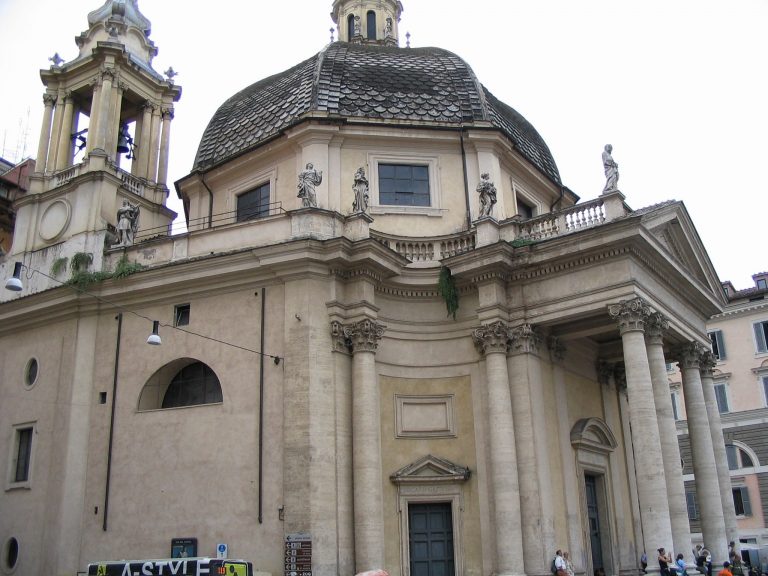The bridges over the Tiber and Castel Sant’ Angelo
Many bridges cross the Tiber, some of them dating from the time of ancient Rome. The smallest is the footbridge Fabridus ( 62 BC ), the oldest Roman bridge to have survived, still used as a link between the Tiberina island and the city, as does the Cestius bridge, restored by the Byzantines in 370 AD. The Ponte Milvio, to the North of Rome, is famous because here Constantine fought and won a battle against Maxentius in 312 AD.
There are also more recent bridges: Ponte Sisto built in 1473 and enlarged in the 19th century; today it is closed to traffic. The splendid Ponte Sant’ Angelo links Castel Sant’Angelo to Campo Marzio. This bridge was built in the 2nd century AD and since 1530 has been adorned by statues of St. Paul ( by Paolo Taccone ) and St. Peter ( by Lorenzetto ). In the mid-17th century, Pope Clement IX had the statues often angels, designed by Bernini and sculpted by his pupils, placed on the balustrade.
Castel Sant’ Angelo – Rome
Castel Sant’ Angelo was built by Emperor Hadrian as a mausoleum for himself. It was finished in 130 AD. Initially, a statue of the Emperor was placed on the terrace of the castle, now replaced by a sculpture of an angel. The entrance to the Castle is through the Courtyard Salvatore that leads into the Courtyard of the Angel where cannonballs are stocked. Michelangelo designed the double line of windows on the back wall. The many rooms in the Castle are extremely interesting: on the third floor in the courtyard of Alexander VI which is embellished by a charming well. It is followed by the bathroom of Clement VII decorated by Giulio Romano. Not to be missed are the historical prisons, called the Mouth of Hell, where such people as Cellini, Giordano Bruno, and Cagliostro were imprisoned.
Except for being a castle, this work of art, of many artists, left this place a museum of rare beauty and numerous works of art. The National Museum of Castel Sant’Angelo keeps collections in the museum that are diverse in character and content of a different time in history. in 1886., they wanted to establish a museum, having kept all the works of art, but the notion was denied. During this time, construction of the earth or stone was built to prevent a river from flooding an area was built. At the same time, excavations must be done to put a ground stone, in which they found, not only the people that were buried here but also an old weapon and various hidden artifacts that are now priceless and can be found inside the museum.
Ponte Sant’ Angelo
In 1901. several of the rooms in the castle was used by the army and stationing the troops. Despite that fact, the museum was renovated later, about 1909. and all the treasures were kept as they were. This Castle is a place you should not miss when visiting Rome, even though it has a lot more to offer if you want to see works of art of many renaissances famous artists.
Finally, there is the Treasury and the beautiful Library.
Palace of the Quirinale
The Palace of the Quirinal ( known in Italian as the Palazzo del Quirinale or shortened – Quirinale ) is one of the three current official residences of the President of the Italian Republic. The place where the Quirinale stands now is the same place where Romans did the excavation. On this steep hill, Romans were building temples to their deities, in this case, the temple was for God’s Flora in the first place, and Quirinus, which name meant ‘ spear ‘ back in Roman times.
It was begun in 1583 and planned by the architect Martino Longhi il Vecchio. It became papal residence under Clement VIII ( 1592-1605 ) until 1870. The Obelisk, coming from the Mausoleum of Augustus, was erected in 1786. The fountain of the Renaissance was placed here in 1818.
